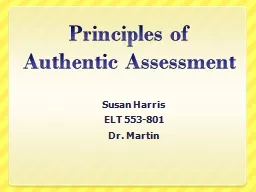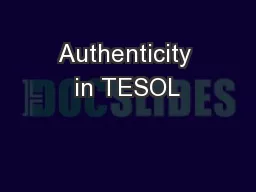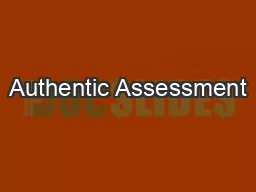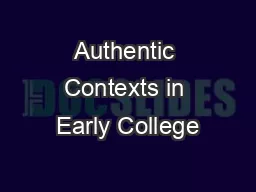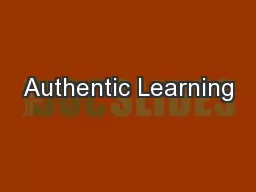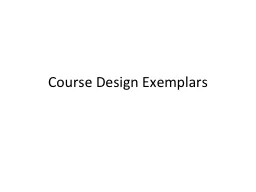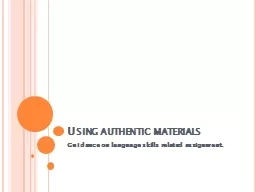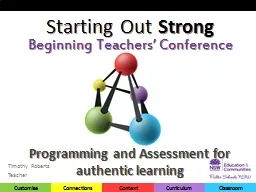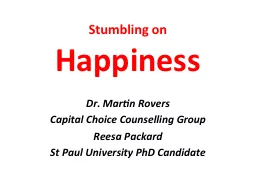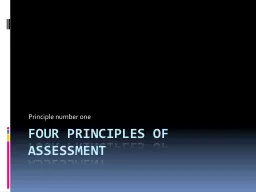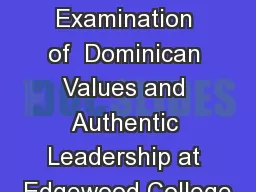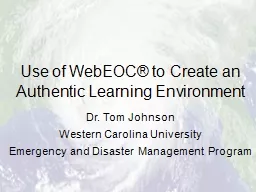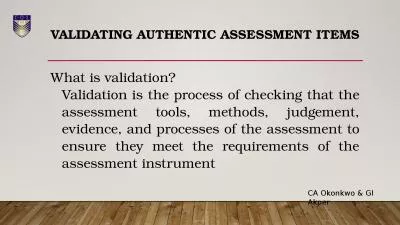PPT-Principles of Authentic Assessment
Author : olivia-moreira | Published Date : 2019-06-22
Susan Harris ELT 553801 Dr Martin Chapter 8 Presents 7 examples from the classroom to illustrate the principles of authentic assessment Each example is based either
Presentation Embed Code
Download Presentation
Download Presentation The PPT/PDF document "Principles of Authentic Assessment" is the property of its rightful owner. Permission is granted to download and print the materials on this website for personal, non-commercial use only, and to display it on your personal computer provided you do not modify the materials and that you retain all copyright notices contained in the materials. By downloading content from our website, you accept the terms of this agreement.
Principles of Authentic Assessment: Transcript
Susan Harris ELT 553801 Dr Martin Chapter 8 Presents 7 examples from the classroom to illustrate the principles of authentic assessment Each example is based either on observation or discussion with teachers. Marc Grossman. Open High School, Randwick (Sydney) NSW. July, 2015 AFMLTA . Australian Professional Standards for Teachers – common language – since 2012. 3 X DOMAINS OF TEACHING . Professional Knowledge + . Dr. Desmond Thomas, . University of Essex. Indicated Reading. Clark, J. 1987:203-7, . Curriculum renewal in school foreign language learning. , Oxford University Press. Field, J. 2008, . Listening in the language classroom. TOOLS FOR THE FUTURE. What is . Authentic Assessment?. “A form of assessment in which students are asked to perform real-world tasks that demonstrate meaningful application of essential knowledge and skills” John Mueller. Mathematics . Lauretta Garrett, Mathematics. Maria Calhoun Charlton, Mechanical Engineering. Li Huang, Psychology and Sociology. TM. Authentic . . . What? . What does “. authentic” mean? . “Real or genuine: not copied or false”. And. Assessment. Project-based Learning for the Core Classes. What is authentic learning?. Write your definition on your paper.. Discuss your definition with your tablemates.. Make a list of the common ideas.. Examples. Addressing student diversity. Flipped classroom. MOOC techniques. Authentic learning. Threshold concepts. Graduate attributes. Others. Common First Year. Courses. School of . Education. Curtin University. Guidance on language skills related assignment.. A. uthentic exposure. Look at the copies of the two receipts. Think of 5 adjectives to describe each person.. I do not know them at all!. Authentic . Timothy Roberts. Teacher . Starting Out . Strong. Beginning Teachers’ Conference. Oblig. Class Expectations. Mr Roberts will …. *. *. *. *. I will…. *. *. *. *. Results:. Year 7. Year 8. Year 9. Happiness. Dr. Martin Rovers. Capital Choice Counselling Group. Reesa Packard. St Paul University PhD Candidate. Know Thyself. Please write 3 words, or short sentences on what you wish to achieve or learn by coming to this talk? . Principle number one. What is authentic assessment?. When something is authentic what is it?. What is the opposite of authentic?. What kinds of assessment are NOT authentic? Why?. Down with the Traditional. By: Suzanne C. Otte Allen, Ed.D.. June 14, 2014. Background of the Study. Leadership Crisis. Achievement Gaps. Changing demographics. Disparities. Dominican Ethos. Normative Values. cor ad cor . loquitur. Dr. Tom Johnson. Western Carolina University. Emergency and Disaster Management Program. Background. NCEM Spring Conference – Professor Merritt works with . WebEOC. staff. May 2011 - Dr. Johnson and Dr. Berry receive training from . What is validation?. Validation is the process of checking that the assessment tools, methods, judgement, evidence, and processes of the assessment to ensure they meet the requirements of the assessment instrument. 1 August 2023. The. . voluntary. . carbon. . market. . is. . critical. . to . accelerate. . a. . just. . transition. . to. . 1.5. °. C.. But. . it. . will. . on. l. y. . succeed. . if.
Download Rules Of Document
"Principles of Authentic Assessment"The content belongs to its owner. You may download and print it for personal use, without modification, and keep all copyright notices. By downloading, you agree to these terms.
Related Documents

